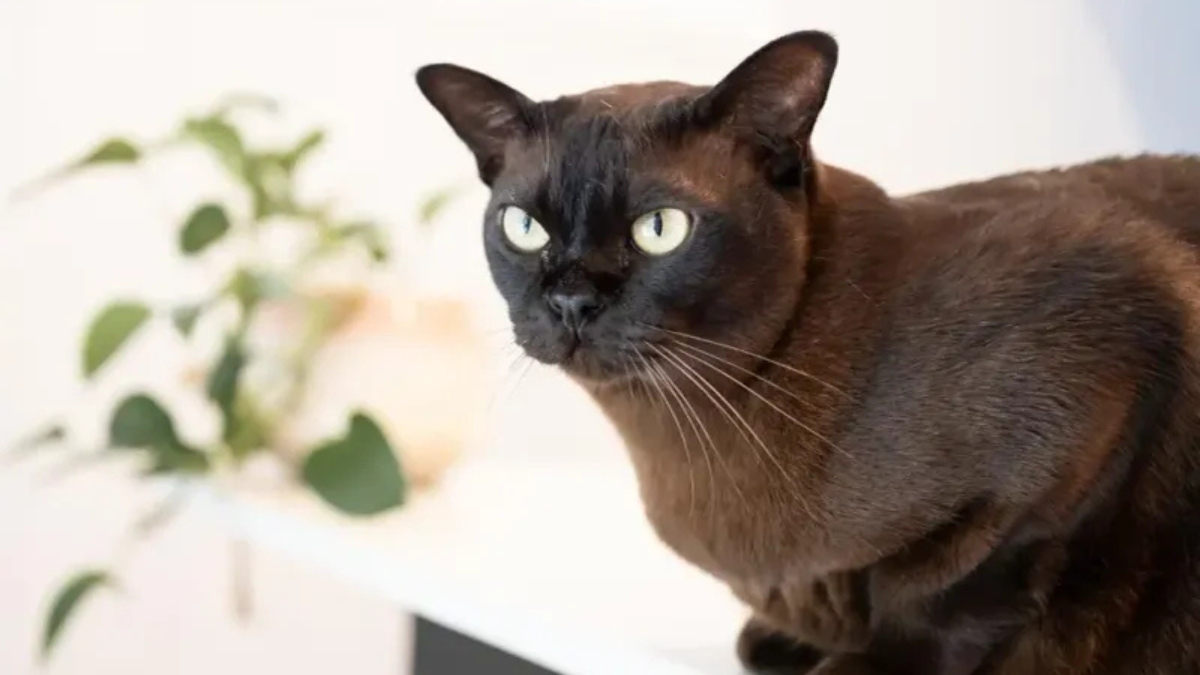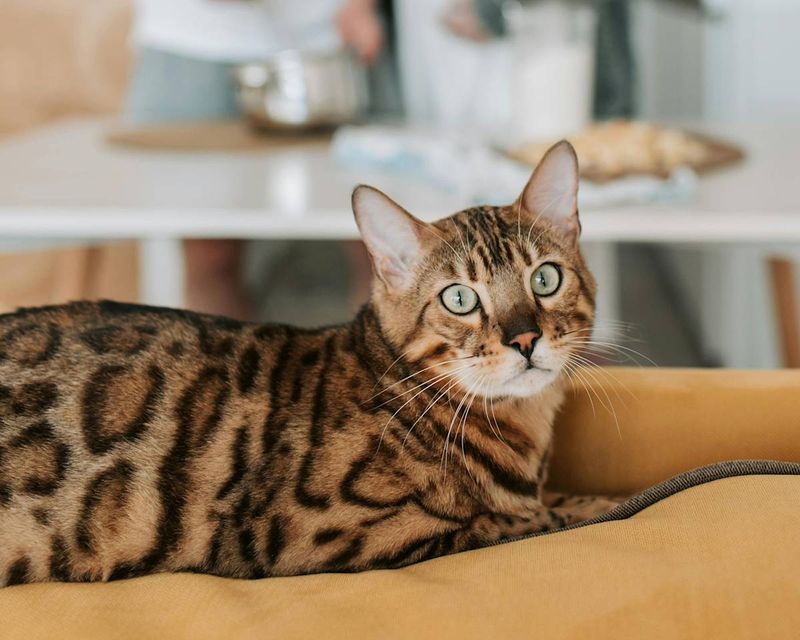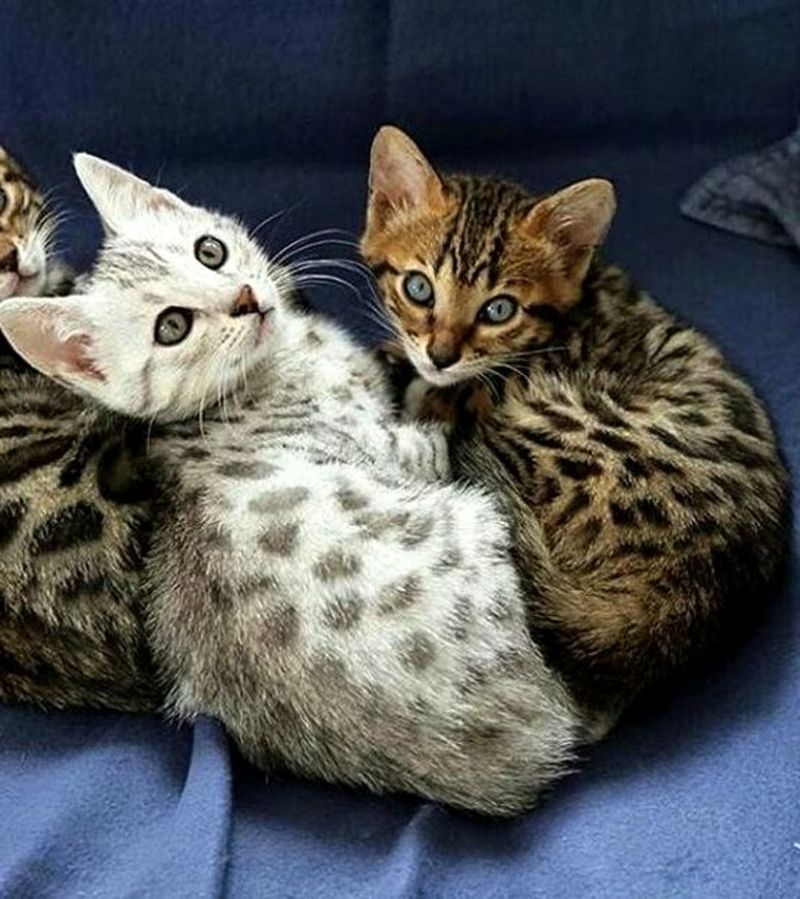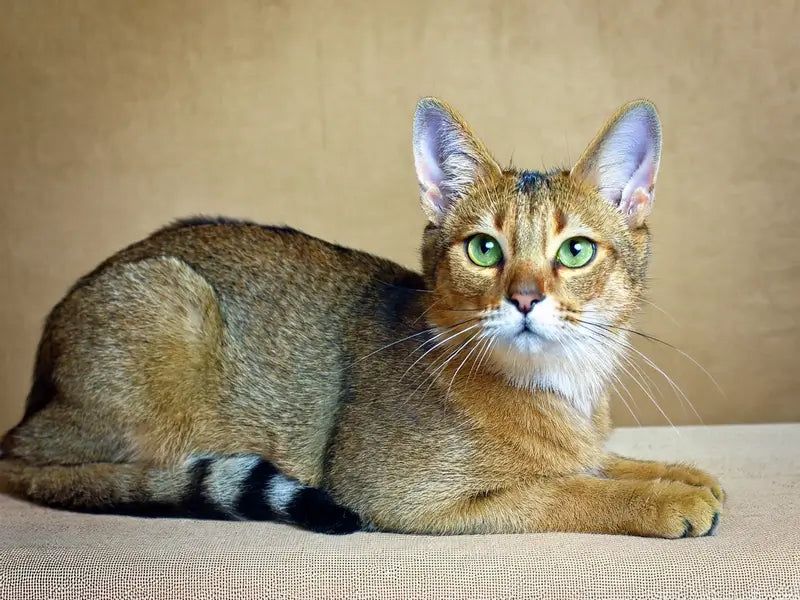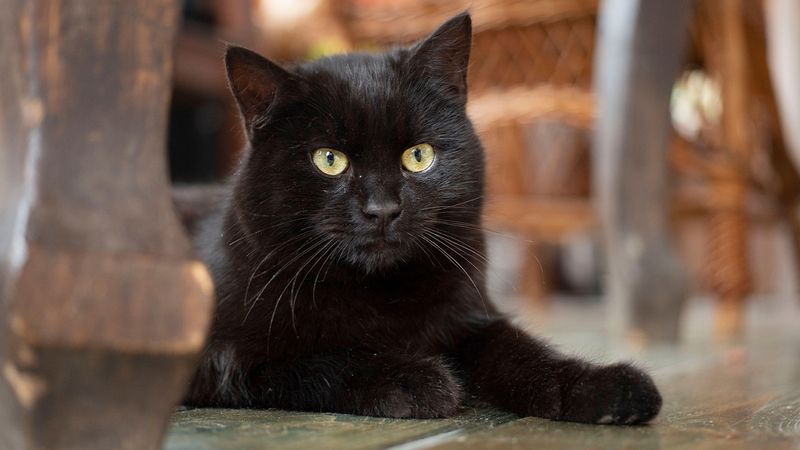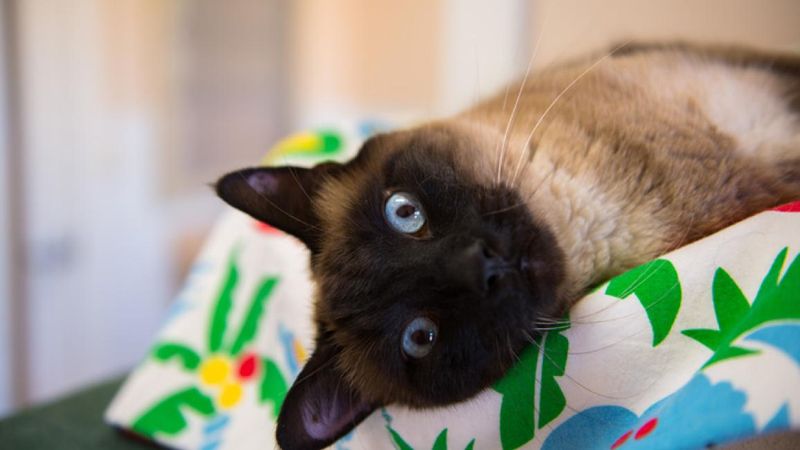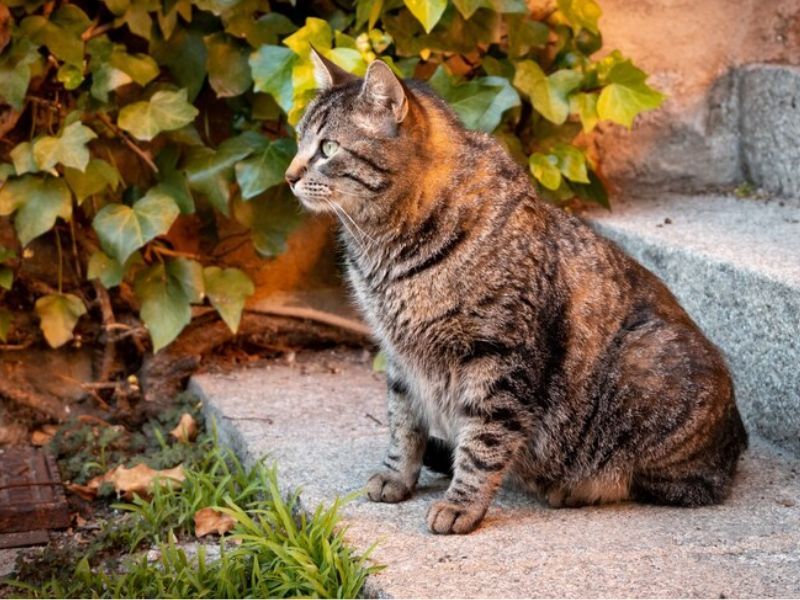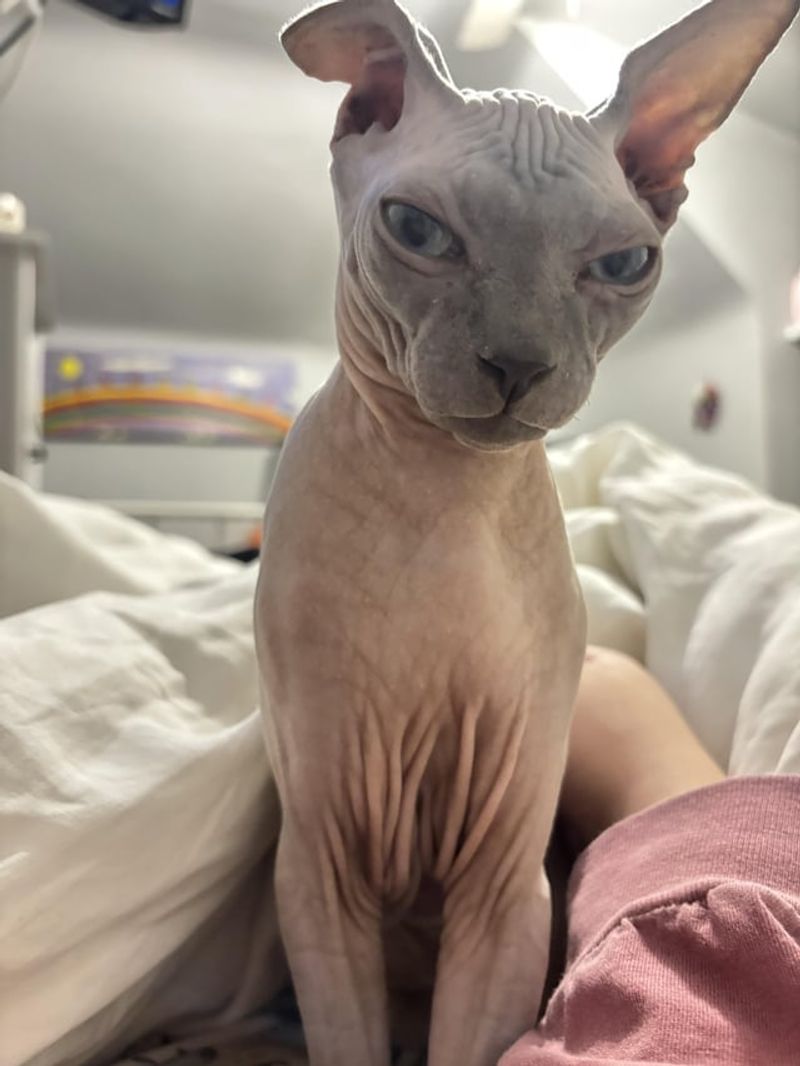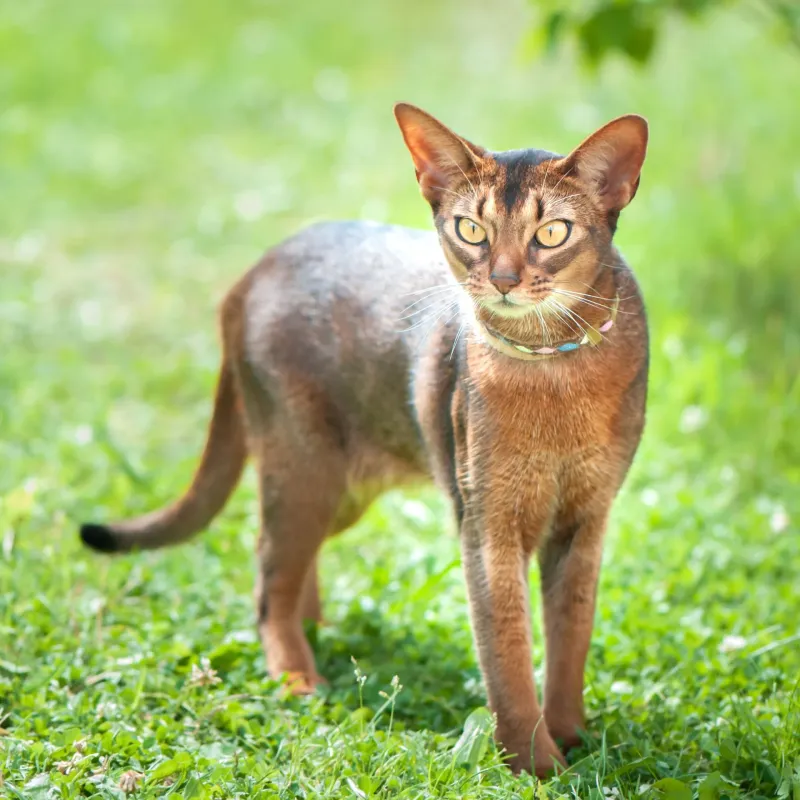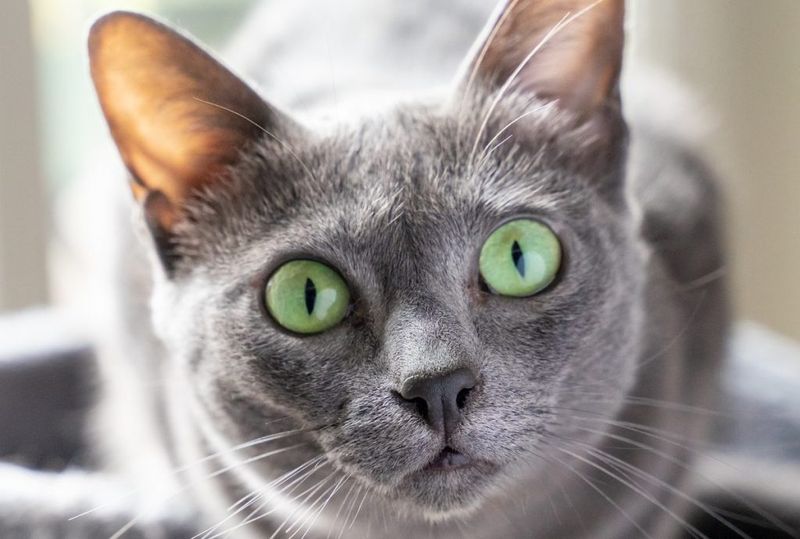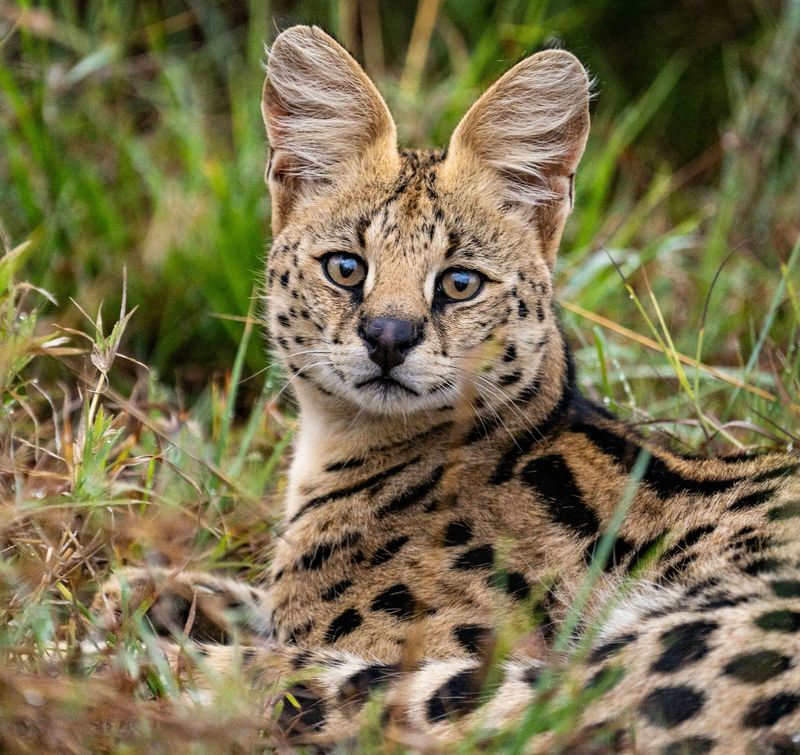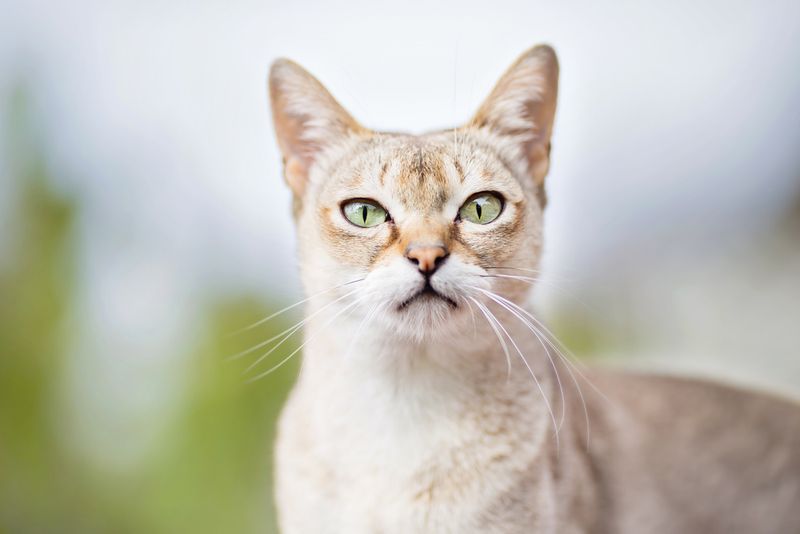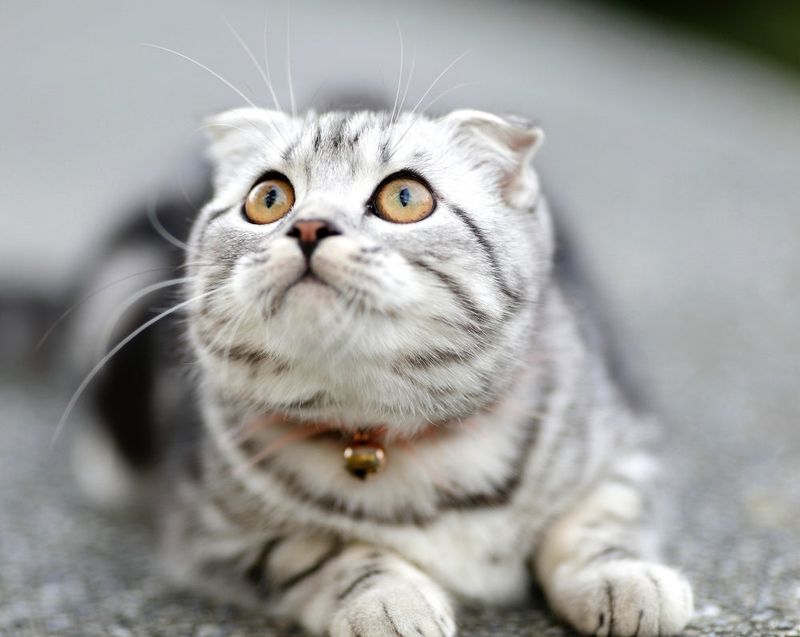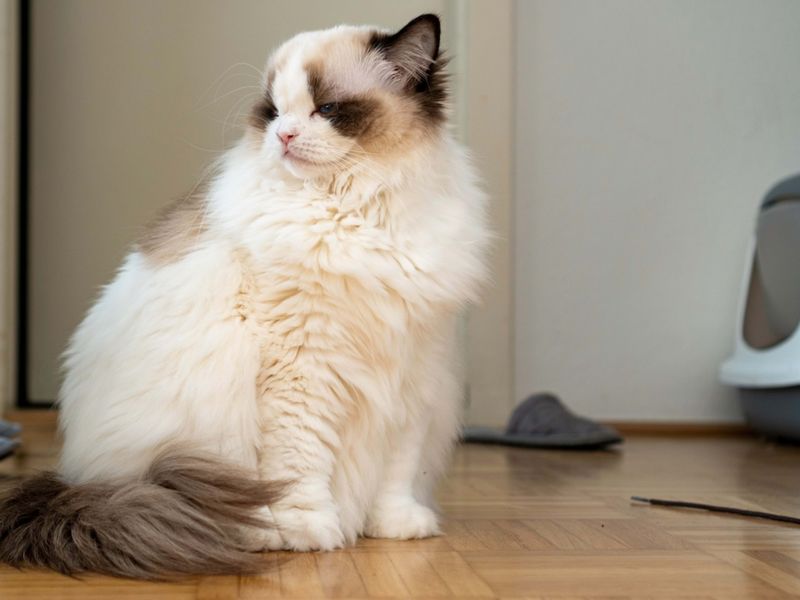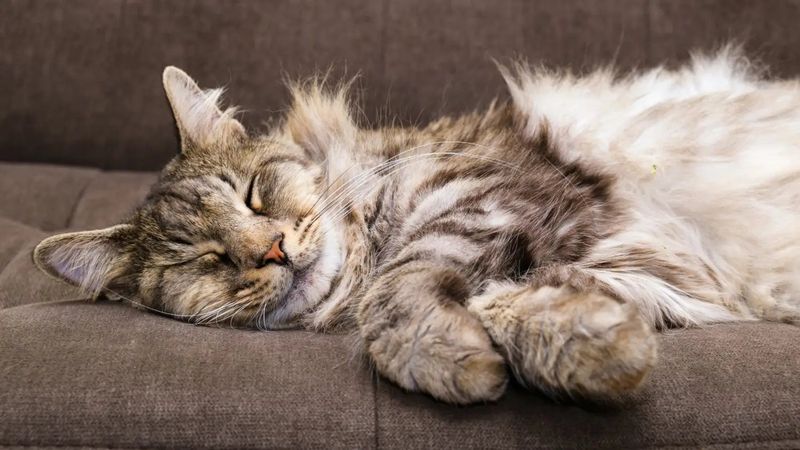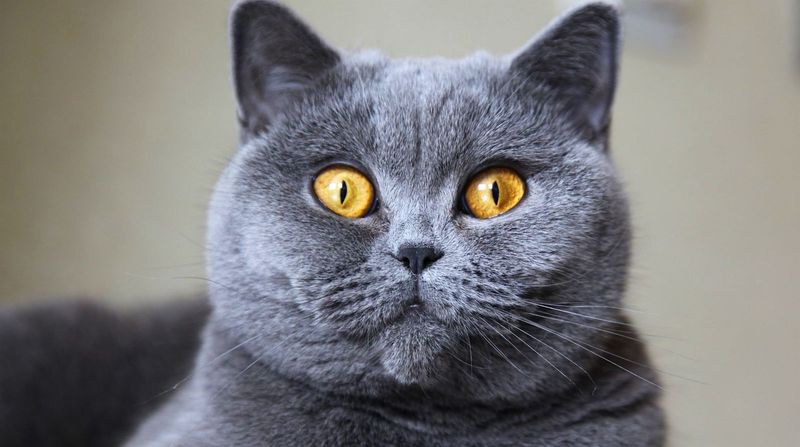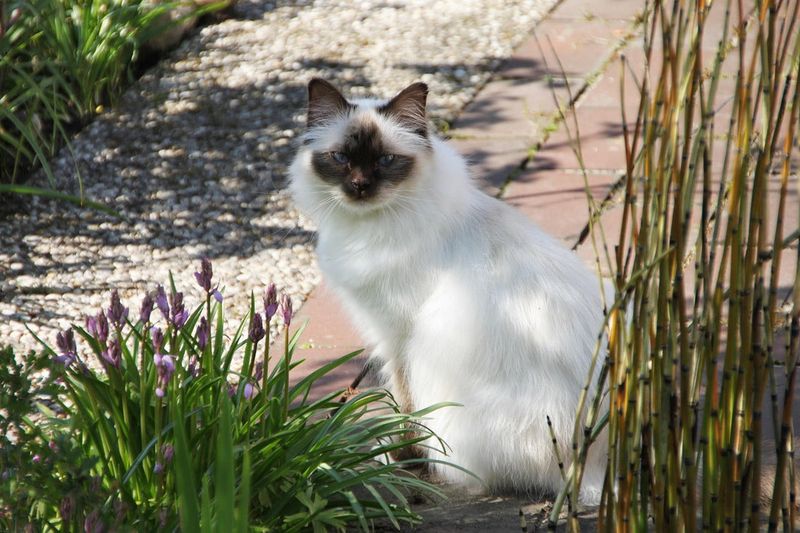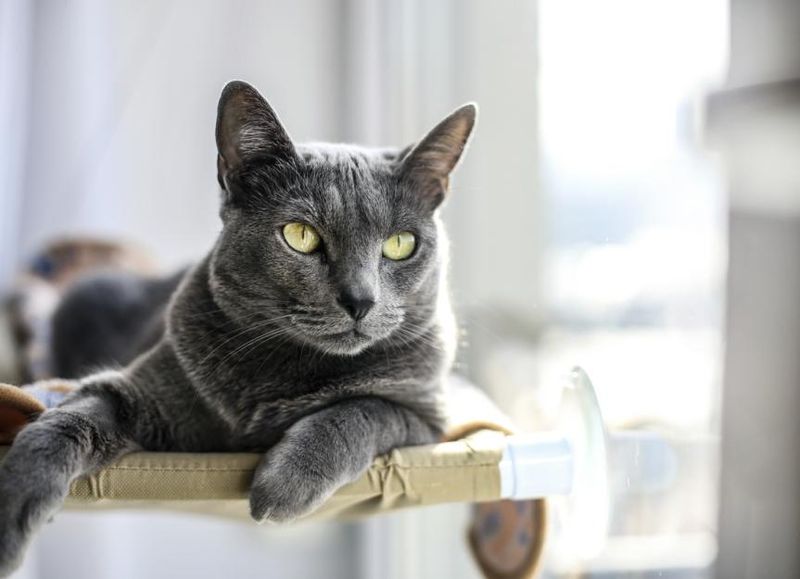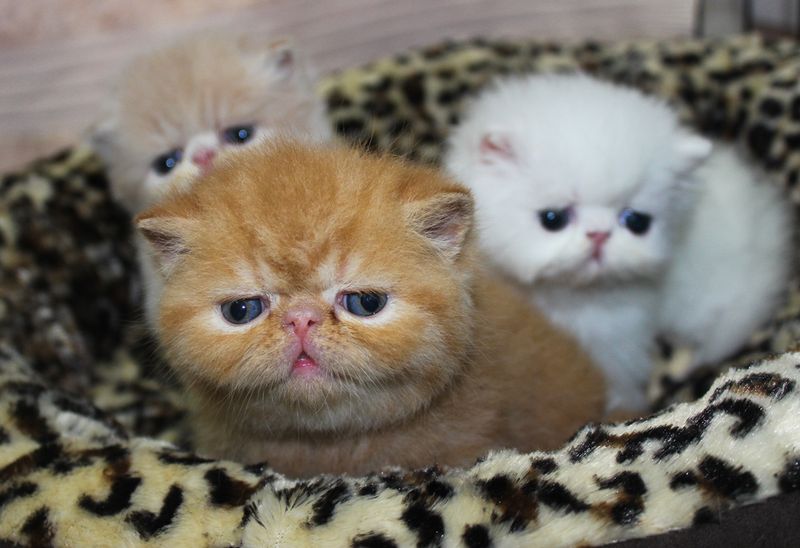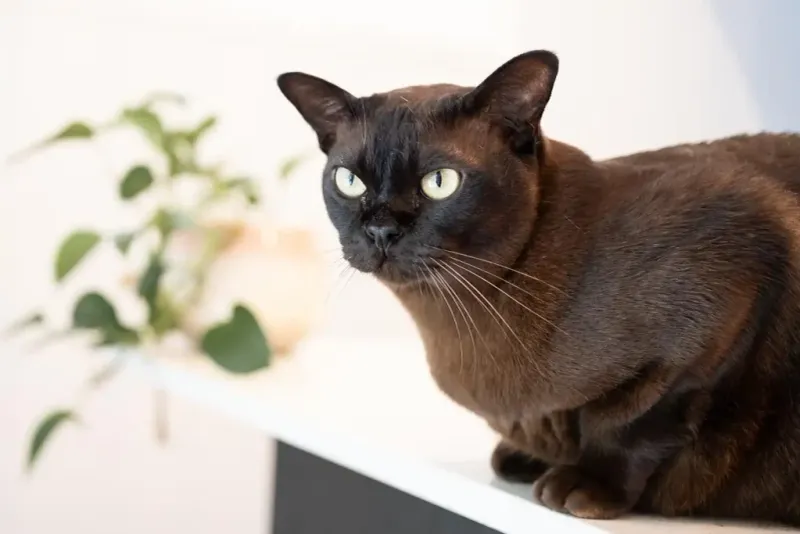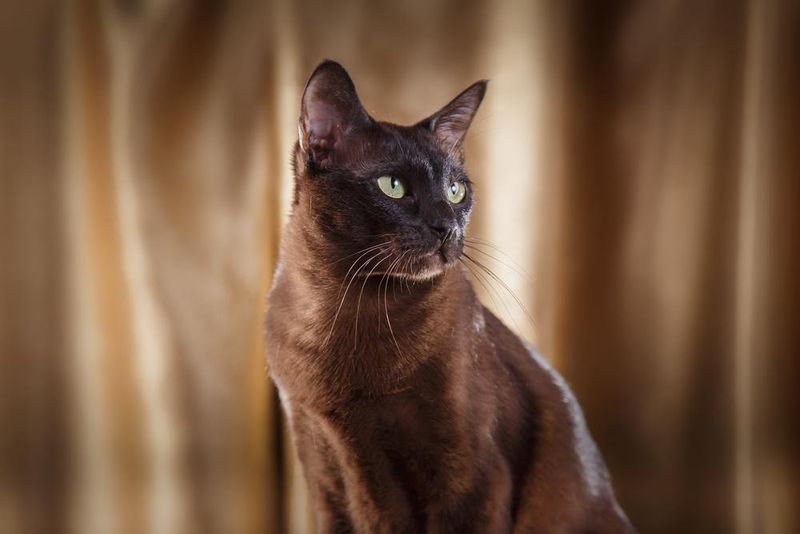📖 Table of Content:
Cats come in all shapes, sizes, and most importantly, personalities. While some feline friends might greet you with a warm purr and gentle headbutt, others might see your hand as their personal scratching post. Understanding which breeds tend to have certain temperaments can help you choose the perfect furry companion for your home. Whether you’re looking for a laid-back lap cat or just want to know which kitties to approach with caution, this guide will walk you through the spectrum of feline attitudes.
1. Bengal
Bengals look like miniature leopards and sometimes act just as wild. Their high energy levels and strong hunting instincts can make them challenging housemates. They require constant stimulation and plenty of space to roam.
Without proper outlets for their energy, Bengals may become destructive and aggressive. They’re known to attack household items, knock things over deliberately, and even bite when frustrated.
First-time cat owners should think twice before bringing home this breed. Their intelligence, combined with their strong will, creates a cat that needs an experienced owner who understands their need for mental and physical challenges.
2. Egyptian Mau
Reaching speeds of up to 30 mph, Egyptian Maus are the track stars of the cat world. Their intelligence and energy mean they thrive best in homes that can keep up.
These spotted cats form intense bonds with their chosen person while often rejecting other family members. They’ve been known to hiss at or even attack people they view as intruders in their territory, including houseguests and new romantic partners.
Their sensitivity to environmental changes can trigger aggressive responses. Something as simple as moving furniture or bringing home new shopping bags might provoke a defensive reaction, complete with growling, swatting, and even biting if they feel their space has been violated.
3. Chausie
A mix between domestic and jungle cats, Chausies are athletic felines capable of soaring over 6 feet in a single bound. Their primal instincts often kick in, making them a risk to smaller household animals.
These large, powerful cats require substantial space and environmental enrichment. Without proper outlets, they may become destructive and aggressive, shredding furniture and curtains or ambushing ankles as you walk by.
Chausies often challenge established household rules and boundaries. Their intelligence, combined with their physical capabilities, makes them adept at opening doors, cabinets, and refrigerators to access forbidden areas or foods, regardless of deterrents put in place.
4. Bombay
With their sleek black coats and copper eyes, Bombay cats look like tiny panthers—and sometimes act like them too. Their sharp intelligence often leads to clever, rule-bending behavior to get what they want.
These determined felines can develop obsessive attachments to their chosen person. They’ve been known to express jealousy through destructive behaviors when their human pays attention to others, including scratching furniture or urinating outside the litter box.
Bombays possess remarkable persistence when they want something. They’ll wake sleeping owners repeatedly throughout the night for attention or food, using increasingly aggressive tactics from gentle pats to painful nips if their initial requests are ignored.
5. Siamese
Behind those hypnotic blue eyes, Siamese cats hide a voice that won’t quit. From mealtime complaints to guest critiques, they’re never short on opinions—or volume.
Their territorial nature makes them particularly suspicious of strangers and new pets. A Siamese might follow you around all day, then suddenly nip at your ankles when displeased.
Famous for their intelligence, these cats can hold grudges for days after perceived slights. They’ll remember exactly who stepped on their tail last week and might plan a strategic revenge when you least expect it.
6. Pixie-Bob
Looking every bit the wildcat with their spotted coats and short tails, Pixie-Bobs sometimes live up to the image—especially males that haven’t been neutered early on.
These large, muscular cats can become territorial about their space and possessions. They’ve been known to guard food bowls, favorite sleeping spots, and even preferred humans from other household pets or family members.
Pixie-Bobs require consistent handling from kittenhood to prevent aggressive tendencies. Without proper socialization, they may react defensively to sudden movements or unfamiliar situations, leading to scratching or biting incidents that can be particularly problematic given their size and strength.
7. Sphynx
Sphynx cats may look vulnerable without fur, but many have attitudes bigger than cats twice their size. Their lack of coat seems to be compensated by an excess of sass and unpredictable mood swings.
These naked felines often develop strong preferences about who can touch them and when. Cross that invisible boundary, and you might face a swift smack from their surprisingly powerful paws.
Sphynx cats demand constant attention yet set strict terms for interaction. Their energy levels can swing dramatically, going from cuddly to combative in seconds. Many owners report being ambushed from shelves or doorways by these hairless hunters with little provocation.
8. Abyssinian
Boundless energy and a curious mind make Abyssinians both fascinating and frustrating. They’ll poke into every nook and cranny, often leaving a trail of broken items behind them.
These ticked-coat cats demand constant engagement and can become aggressive when bored. Their play often escalates to rough behavior, including biting and scratching, especially with inexperienced owners who don’t recognize warning signs.
Abyssinians rarely enjoy being held or cuddled on someone else’s terms. Attempt to pick them up against their will, and you’ll likely face a flurry of claws and teeth. Their independent streak makes them unsuitable for families seeking an affectionate lap cat.
9. Korat
They may be gifted as symbols of good fortune, but Korats have strong feelings about how things should run at home. When routines shift, these silver-coated charmers can get seriously set in their ways.
Their intelligence makes them excellent at finding ways to express displeasure, from strategic hairball placement to knocking over specific items belonging to the person who annoyed them. Korats have been known to hold grudges for days after perceived mistreatment.
These cats form intense bonds with their chosen people while often rejecting others completely. They may hiss at or even swat visitors who attempt to pet them without proper introduction, and some never warm up to strangers, regardless of how frequently they visit.
10. Savannah
Born from the mix of domestic cats and African servals, Savannahs are exotic and athletic. They can launch themselves onto your fridge in one leap—and sometimes channel that same energy into aggressive play.
These cats require experienced owners who understand their need for boundaries and enrichment. Without proper outlets, they may redirect predatory behaviors toward other pets or even human ankles.
Savannahs often establish strict dominance hierarchies in multi-pet households. Their large size, combined with their athletic prowess, makes them intimidating when they decide to assert themselves, leading to tense standoffs with other animals and occasionally their human caretakers.
11. Singapura
Don’t let the Singapura’s tiny size fool you—these cats pack a mighty attitude into their small frames. As one of the smallest cat breeds, they often develop Napoleon complexes, challenging much larger animals and even their human caretakers.
Singapuras are known for their sudden mood shifts. One moment they’re purring in your lap, the next they’re sinking teeth into your hand without warning. Their unpredictable nature makes them challenging for families with young children.
These cats require extensive socialization to prevent aggressive tendencies. Without proper training, they may become territorial over food, toys, and sleeping spots, leading to hissing standoffs and surprise attacks when boundaries are crossed.
1. Scottish Fold
Scottish Folds stand out with their distinctive folded ears that give them an owl-like appearance. These sweet-natured cats adapt easily to most living situations and rarely show signs of aggression or anxiety.
They form strong bonds with their humans but don’t demand constant attention. When you’re busy, a Scottish Fold will happily entertain itself or take a leisurely nap nearby.
These cats maintain a playful personality well into adulthood without the destructive energy of more hyper breeds. Their moderate activity level makes them perfect for apartments or homes with children, as they rarely scratch or bite even when annoyed.
2. Ragdoll
True to their name, Ragdolls go limp in your arms like a plush toy. These gentle giants may be hefty, but their serene nature makes them feel light as a feather.
Unlike territorial breeds, Ragdolls welcome visitors and new family members with open paws. They rarely hiss or scratch, making them excellent companions for households with children or other pets.
These blue-eyed beauties follow their favorite humans from room to room without being clingy or demanding. Their patient nature means they’ll wait quietly for attention rather than forcing interaction through destructive behavior or aggressive tactics.
3. Maine Coon
Weighing in at up to 25 pounds, Maine Coons are skilled hunters wrapped in gentleness. Their size may be commanding, but their manners are nothing short of graceful.
Despite their wild appearance with tufted ears and shaggy coats, Maine Coons rarely show aggression. They communicate with distinctive chirps and trills rather than hisses or growls, even when annoyed.
Their patient nature makes them exceptional companions for children learning how to interact with pets. A Maine Coon will typically walk away from rough handling rather than scratch or bite, returning when the interaction becomes more pleasant.
4. British Shorthair
Known for their laid-back attitude and sweet round faces, British Shorthairs handle life’s chaos with ease—ideal for families or new cat owners.
Unlike needier breeds, British Shorthairs respect personal space—both yours and theirs. They enjoy companionship without demanding constant attention, happily entertaining themselves or napping when you’re busy.
Their even temperament means they rarely engage in destructive behaviors like furniture scratching or aggressive play. These cats adjust well to schedule changes and new environments without stress-induced behavior problems, maintaining their pleasant disposition through household upheavals that might send other cats into hiding.
5. Birman
Birmans carry themselves with a quiet dignity that sets them apart from more rambunctious breeds. Their soft voices rarely rise to demanding yowls, even when they’re hungry or seeking attention.
These color-pointed beauties with distinctive white gloves show remarkable patience with children and other pets. They’ll gently remove themselves from uncomfortable situations rather than lashing out with claws or teeth.
Birmans adapt easily to different living environments, from busy households to quiet apartments. Their moderate energy levels mean they enjoy interactive play without becoming destructive when bored. Unlike more territorial breeds, they welcome visitors without suspicion and rarely hide when company arrives.
6. Russian Blue
With gorgeous silver-blue coats and balanced temperaments, Russian Blues are known for their consistent, gentle nature that makes them easy to love.
Their naturally reserved nature means they won’t demand attention by climbing on keyboards or knocking items off shelves. Instead, they communicate their needs with gentle nudges or quiet meows that never escalate to annoying yowls.
Russian Blues adapt well to different household schedules, content to entertain themselves while you’re busy but ready for gentle interaction when you’re available. Their sensitivity to human emotions makes them excellent companions during difficult times—they offer comforting presence without overwhelming energy.
7. Exotic Shorthair
These cats have Persian hearts and faces but without the fuss of constant grooming. Exotic Shorthairs’ squished features make them look like they’re smiling through life’s easy moments.
These plush teddy bears of the cat world rarely engage in destructive behaviors like excessive meowing or furniture scratching. They approach play with moderate enthusiasm, enjoying interactive toys without the frantic energy that leads other breeds to knock over lamps or climb curtains.
Exotic Shorthairs adjust well to apartment living and don’t mind being left alone for reasonable periods. Their affectionate nature is balanced with respect for personal space—they’ll cuddle when invited but won’t demand attention through aggressive tactics.
8. Burmese
Known for their playful yet easygoing demeanor, Burmese cats thrive in diverse homes. Their soft, shiny coats vary in color, but their warm, golden eyes are a constant.
Unlike more independent breeds, Burmese genuinely enjoy human companionship without becoming demanding. They’ll follow family members around the house, offering silent support rather than vocal complaints or destructive attention-seeking.
These medium-sized cats maintain kitten-like playfulness throughout their lives without developing the aggressive pouncing or biting that makes some active breeds challenging. Their social nature extends to visitors and new pets, whom they typically welcome with curious interest rather than territorial displays.
9. Tonkinese
Tonkinese cats blend the best qualities of their Siamese and Burmese ancestors. Their medium-sized, muscular bodies house personalities that strike a perfect balance between playfulness and relaxation.
Unlike their more vocal Siamese relatives, Tonkinese communicate with soft chirps and trills rather than demanding yowls. They express their needs clearly without becoming annoying or disruptive to household peace.
These social butterflies genuinely enjoy meeting new people and animals. They rarely show aggression toward visitors or new pets, making them excellent choices for households with frequent guests or multiple animals. Their adaptable nature means they settle quickly into new environments with minimal stress behaviors.
